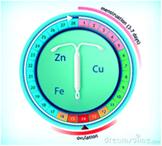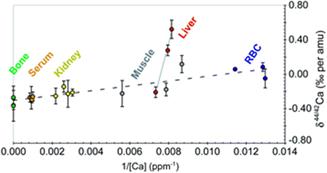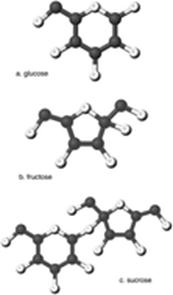Welcome to this month’s bioanalytical highlights, keeping you up to date with latest developments in elemental analysis with a biological twist. All articles are free to read until April 22nd.
Atomic spectrometry update: Review of advances in the analysis of clinical and biological materials, foods and beverages
Andrew Taylor, Martin P. Day, Sarah Hill, John Marshall, Marina Patriarca and Mark White
J. Anal. At. Spectrom., 2014, 29, 386 DOI:10.1039/C4JA90001D
The influence of menstrual blood loss and age on the isotopic composition of Cu, Fe and Zn in human whole blood
Lana Van Heghe, Olivier Deltombe, Joris Delanghe, Herman Depypere and Frank Vanhaecke
J. Anal. At. Spectrom., 2014, 29, 478 DOI:10.1039/C3JA50269D
The coordination core of Ag(I) N-heterocyclic carbene (NHC) complexes with anticancer properties as revealed by synchrotron radiation X-ray absorption spectroscopy
Marco Giorgetti, Giuliana Aquilanti, Maura Pellei and Valentina Gandin
J. Anal. At. Spectrom., 2014, 29, 491 DOI:10.1039/C3JA50242B
A simplified protocol for measurement of Ca isotopes in biological samples
Théo Tacail, Emmanuelle Albalat, Philippe Télouk and Vincent Balter
J. Anal. At. Spectrom., 2014, 29, 529 DOI:10.1039/C3JA50337B
An inter-laboratory comparison of high precision stable isotope ratio measurements for nanoparticle tracing in biological samples
Fiona Larner, Brian Gulson, Maxine McCall, Yalchin Oytam and Mark Rehkämper
J. Anal. At. Spectrom., 2014, 29, 471 DOI:10.1039/C3JA50322D
A critical overview of Cr speciation analysis based on high performance liquid chromatography and spectrometric techniques
Janez Ščančar and Radmila Milačič
J. Anal. At. Spectrom., 2014, 29, 427 DOI:10.1039/C3JA50198A
Rapid identification of phosphorus containing proteins in electrophoresis gel spots by Laser-Induced Breakdown Spectroscopy, LIBS
Nadir Aras and Şerife Yalçın
J. Anal. At. Spectrom., 2014, 29, 545 DOI:10.1039/C3JA50225B
The effect of paraformaldehyde fixation and sucrose cryoprotection on metal concentration in murine neurological tissue
Dominic J. Hare, Jessica L. George, Lisa Bray, Irene Volitakis, Angela Vais, Timothy M. Ryan, Robert A. Cherny, Ashley I. Bush, Colin L. Masters, Paul A. Adlard, Philip A. Doble and David I. Finkelstein
J. Anal. At. Spectrom., 2014, 29, 565 DOI:10.1039/C3JA50281C















